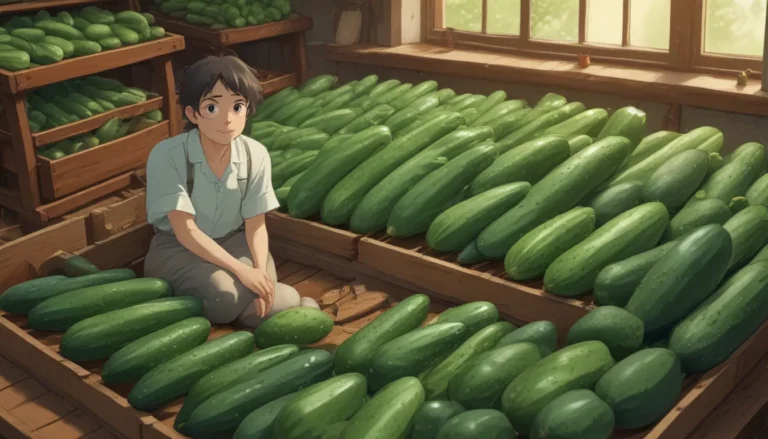A Comprehensive Guide to Growing Chives in Containers

Are you a culinary enthusiast who loves to add a flavorful kick to your dishes? If so, growing your own chives in containers could be the perfect solution for having this versatile herb at your fingertips whenever you need it.
Chives, with their vibrant green color, refreshing crunch, and subtle onion flavor, are a staple ingredient in many recipes. Having a pot of these easy-to-grow alliums within arm’s reach can elevate your salads, entrees, and side dishes with their distinctive taste.
If you’re located in USDA Hardiness Zones 3-9, you can enjoy the luxury of growing chives outdoors year-round. However, if you live in a colder climate, such as North Dakota, bringing your chives indoors will ensure a fresh supply all year long.
In this detailed guide, we will explore the various methods for growing chives in containers, from using nursery starts to starting from seed. Let’s dig in and discover how you can cultivate these flavorful herbs right on your patio or windowsill.
What You’ll Learn
- Using Nursery Starts
- Transplanting from the Garden
- Starting from Seed
- Care and Harvest
Using Nursery Starts
A convenient way to kickstart your chive container garden is to purchase small chive plants from a local nursery. Once you have your nursery starts, you can transplant them into a container of your choice.
Opt for a six- to eight-inch container that is at least six inches deep to accommodate the growth of your chive plants. Make sure the pot has drainage holes at the base to prevent waterlogging.
Plant the chive transplants at the same depth they were in the nursery containers and leave some space between the soil surface and the rim of the pot. Using a light, high-quality potting mix or adding perlite for improved drainage can help create a conducive environment for your chive plants to thrive.
Transplanting from the Garden
Do you already have chives growing in your garden? If so, you can easily transplant them into containers for a convenient herb garden right on your porch or balcony.
To transplant chives from the ground, water the soil around the plants to soften it before carefully digging them up. Trim the chives back to about four inches tall, as you can use the trimmings in various culinary creations.
Gently loosen the soil around the chive clump, avoiding damage to the roots, and transplant them into a container with high-quality potting mix.
Starting from Seed
If you prefer to start your chive plants from seed, you can sow them indoors about eight to 10 weeks before the last frost. Starting from seed allows you to enjoy the full growth cycle of the chive plants, albeit with a longer wait time before harvesting.
While growing chives from seed takes patience, it can be a rewarding experience to watch your plants develop from delicate seedlings to robust herbs ready for harvest.
Care and Harvest
Once your chive plants are established in containers, ensure they receive at least six hours of sunlight daily for optimal growth. Water the plants regularly, keeping the soil moist but not waterlogged.
You can start harvesting chives when the blades reach at least six inches in height. Remember to leave a few inches of the plant intact to allow for regrowth. By planting multiple pots of chives, you can ensure a continuous supply for your culinary endeavors.
Chives are not only flavorful but also visually appealing, making them an excellent addition to herb gardens in containers. Some gardeners choose to let a pot of chives bloom, producing attractive purple flower heads that are edible as well.
To ensure healthy growth, fertilize your chive plants with a diluted liquid fertilizer every four to six weeks. With proper care and maintenance, you can enjoy a bountiful harvest of fresh chives throughout the growing season.
Advantages of Growing Chives in Containers
Growing chives in containers offers numerous benefits for home gardeners. Some of the key advantages include:
- Convenience: Having chives within arm’s reach in your kitchen can make meal preparation a breeze.
- Freshness: Harvesting chives directly from your container garden ensures maximum freshness and flavor.
- Portability: Containers allow you to move your chive plants around to optimize sunlight exposure and growing conditions.
- Visual Appeal: The delicate foliage of chive plants adds a touch of elegance to your herb garden.
To make the most of your container-grown chives, remember to keep the soil consistently moist and supplement with fertilizer as needed. By following these simple care tips, you can enjoy a thriving herb garden right in your home.
Are you ready to embark on your chive-growing journey? Share your experiences and tips for growing chives in containers in the comments below!
If you’re interested in exploring more herb-growing tips, check out these articles:
- How to Grow Herbs in Containers
- Tips for Growing Caraway in Containers
- How to Grow Rosemary in Pots and Containers
In conclusion, growing chives in containers offers a convenient and rewarding experience for herb enthusiasts. With the right techniques and care, you can cultivate a flourishing herb garden right in your home. Whether you’re a seasoned gardener or a novice enthusiast, container gardening provides a practical and accessible way to enjoy fresh herbs year-round. Happy growing!





